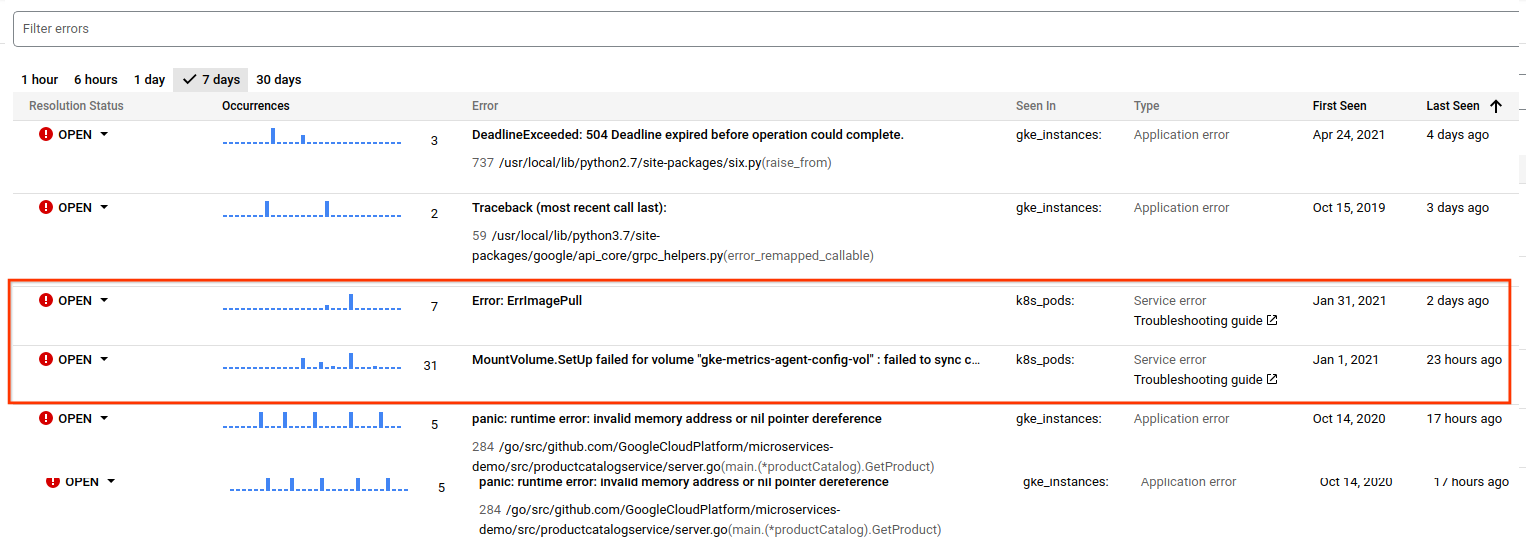Error Reporting enables you to identify, understand, and manage application errors by automatically capturing application crashes and grouping the stack traces from these crashes into error groups. Some Google Cloud service errors, however, are logged as error messages and don't come in the form of stack traces. Error Reporting's Service Errors feature automatically captures and groups these kinds of Google Cloud service errors so that you can quickly identify issues in your system and be notified when new errors occur.
For example, you might encounter a situation when using Cloud Run in which you reach your maximum container instance limit when making a request. When this event is logged to Cloud Logging, Service Errors in Error Reporting automatically captures this error, groups it with similar errors, and notifies you that this event has occurred. Additionally, to help resolve these errors, some Google Cloud services provide troubleshooting documentation that you can access from the Error Reporting page.
View service errors
In the Google Cloud console, go to the Error Reporting page:
You can also find this page by using the search bar.
When Error Reporting detects and groups a log containing a new service error, you can see these service errors on the Error Reporting overview page in the Type column.

For service errors with documented solutions, Error Reporting provides a link to the Troubleshooting guide provided by the Google Cloud service.
Sample service errors
The following table lists some, but not all, of the errors that Error Reporting's Service Errors captures.
| Google Cloud service name | Error type |
|---|---|
| Dataflow | Worker logs throttling Out of memory (system) Missing custom subnet Lengthy operation in step JRE Crash Worker JAR file misconfigured |
| Cloud Run | Memory limit exceeded No instances available |
| Google Kubernetes Engine | Unhealthy pod, failed probe Pods failed scheduling Restarting failed container with backoff Unmounted volume Container image pull failed Failed to update endpoint Secrets/configmaps not found |
